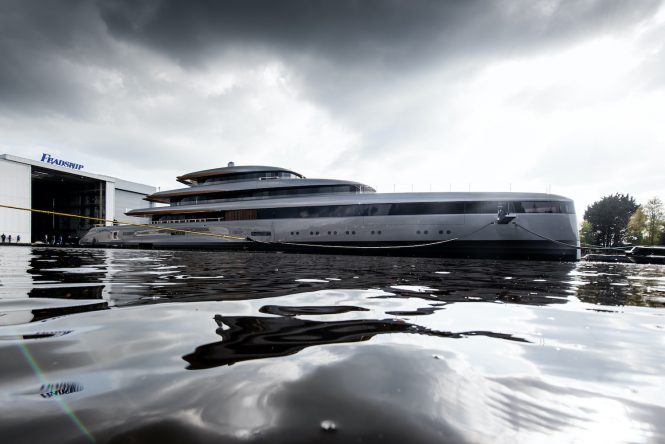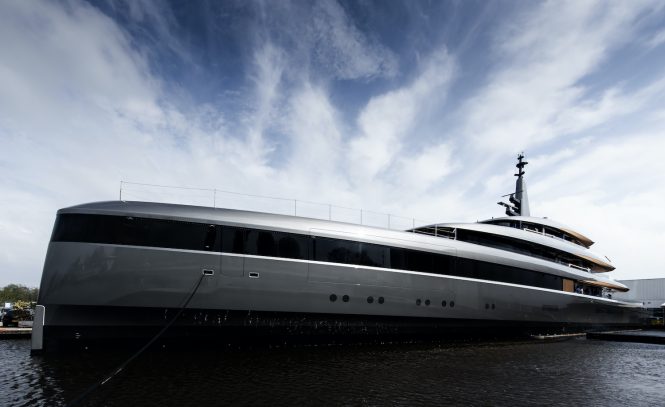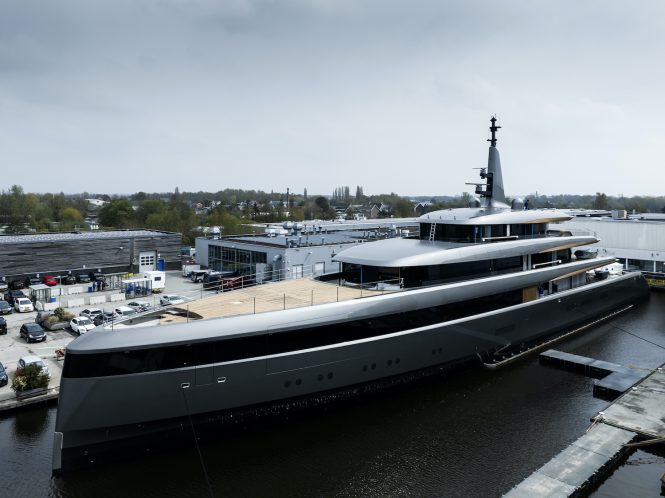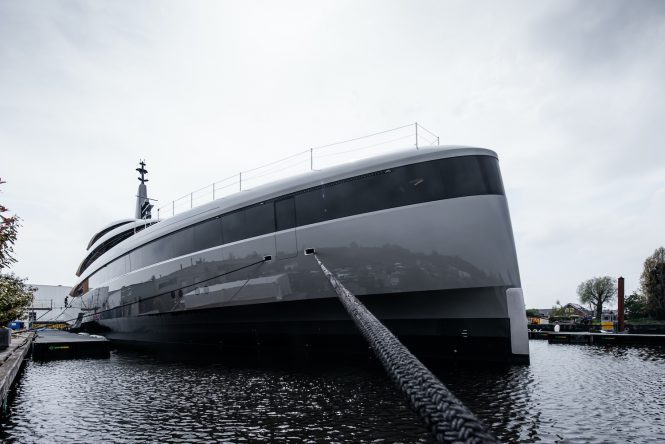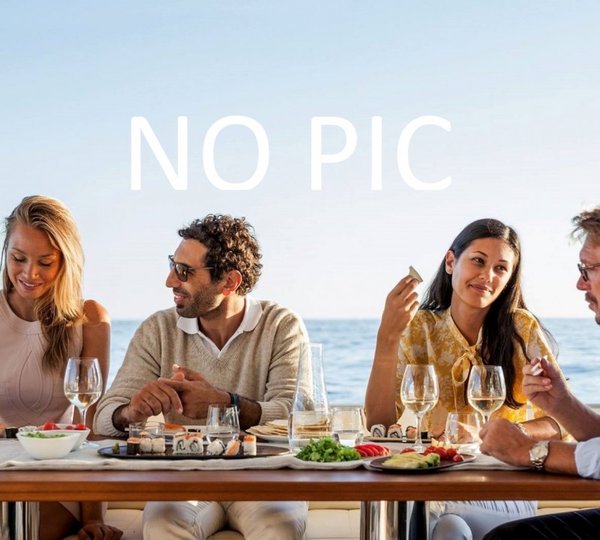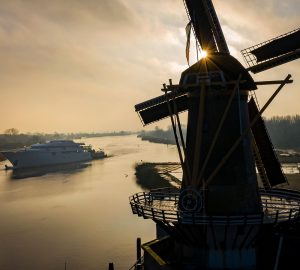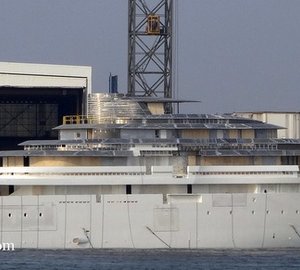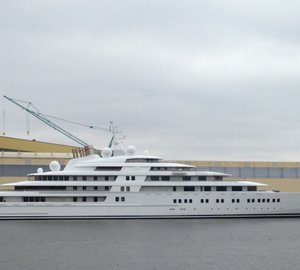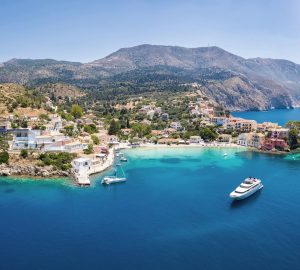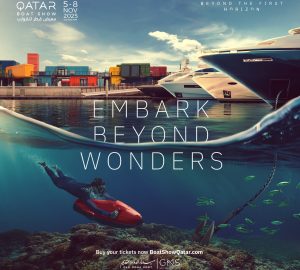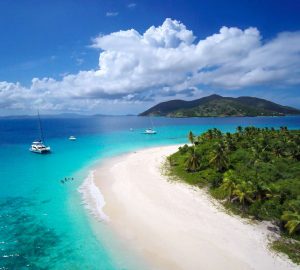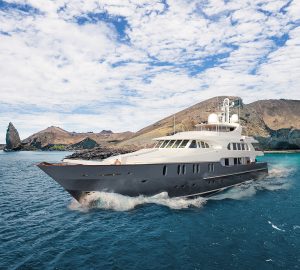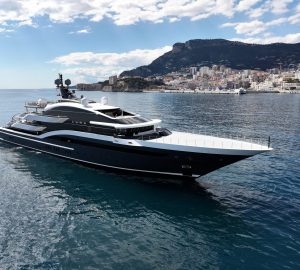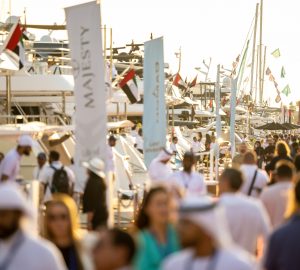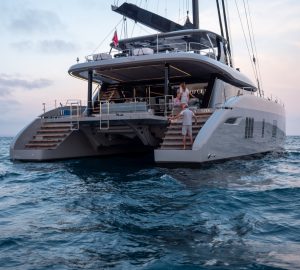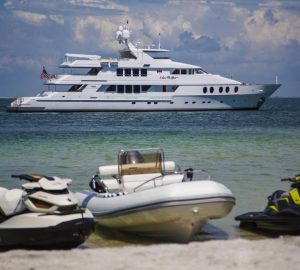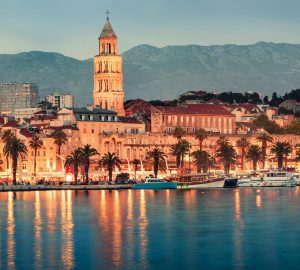The 84m superyacht Project 710 left her construction shed at the Feadship shipyard in Aalsmeer, ready for final outfitting and sea trials. Her design brief requested each yacht design norm be questioned and challenged in order to create a new, next-generation yacht both in terms of architecture as well as engineering. Her low profile, horizontal design features and clean shapes create a stretched optical illusion while her strong bow show strength and seaworthiness. The interior architecture and design, as well as the exterior design, are by the renowned British company RWD in collaboration with MONK Design.
One of the stand-out features is the single-level engine room, which allows for additional space when it comes to accommodation. On the inside, an asymmetrical atrium staircase leads down to the lower deck dining area, where an entire wall opens to reveal a trace view just above sea level. The Aqua Lounge, located at the stern, offers amazing underwater views thanks to the huge windows below the water level. Instead, if the mooring deck is forward there is a revelatory bow observation lounge with double-curved glass floor-to-ceiling windows. Terraced aft decks float without pillars, and glass balustrades offer incredible views from the aft deck as well as the aft interior areas, creating a seamless interior/exterior flow aboard this vessel.
Feadship Project 710 is the first of the new generation of superyachts increasing carbon reduction through hull-optimisation at cruising speed instead of top speed, weight control, advanced electric propulsion and the ability to run her generators on HVO, a second-generation biodiesel – net zero CO2 fuel. Sea trials and delivery fill will be HVO, reducing total CO2 emissions by approximately 90%.
Thanks to Feadship’s Advanced Electrical Drive (FAED) program for diesel-electric power, this yacht has 4,5 more electrical storage capacity than the yard’s first hybrid yacht, Savannah. There are no drive shafts or rudders and the electric steering and drive are thought a pair of electric Veth contra-rotating thrusters. Feadship and Veth cooperated on computational fluid dynamics (CFD) analysis of the drive legs and propellors’ shapes to maximize efficiency and minimize vibration.
Providing energy for the luxury accommodation accounts for the majority of the yacht’s consumption, as such the engineering department created a possibility of capturing waste heat from the custom variable speed generators and air-conditioning chiller to provide heat to the air conditioning system, pool water, domestic water, engine preheating and more. There is also a state-of-the-art heat pump system on board, allowing the yacht to extract heat from seawater. All of these features were created with the least eco-impact in mind. More details about this highly-innovative project are to be realised in the future.

